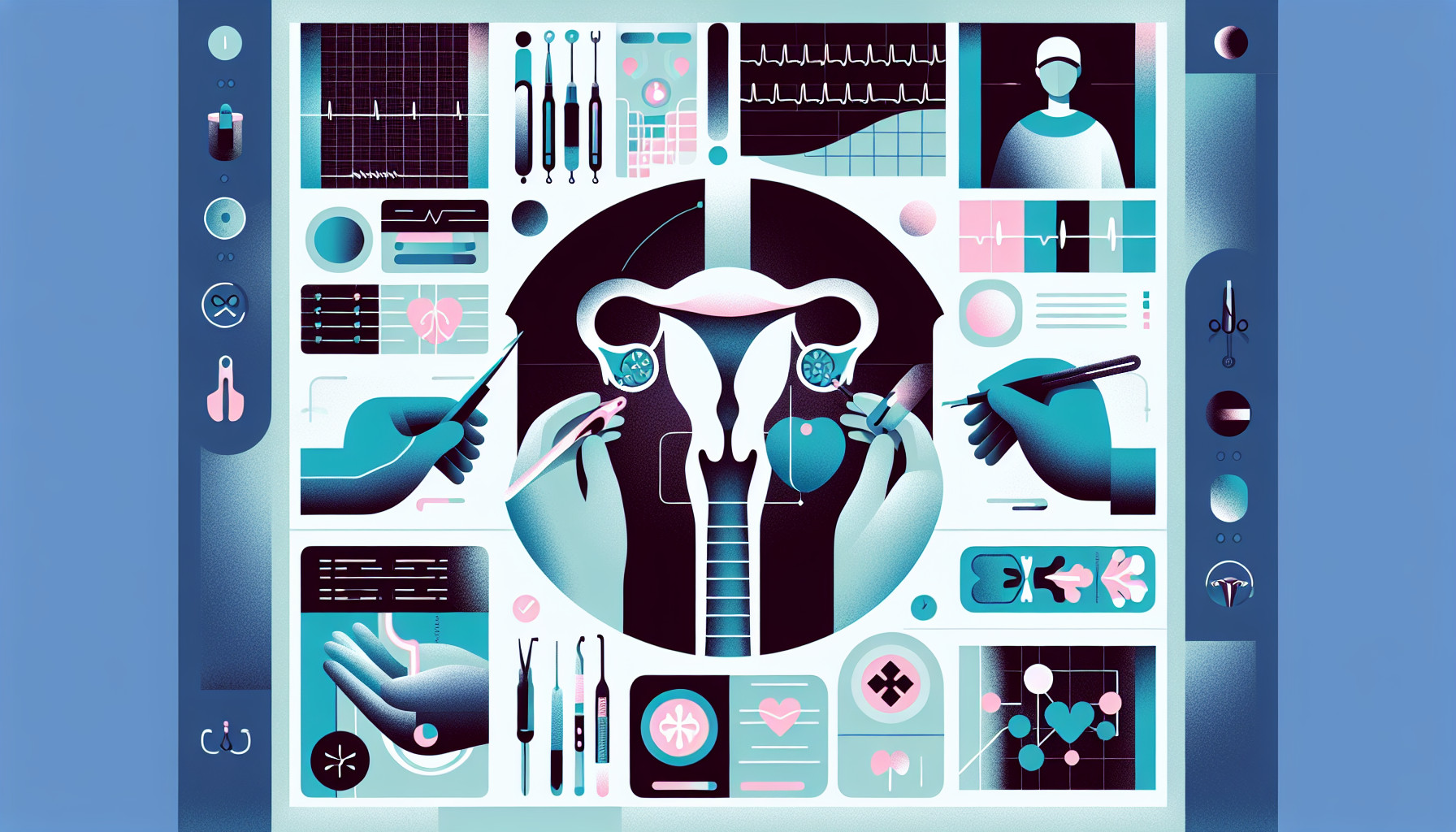Our Summary
This research paper is about a method of treating heavy menstrual bleeding, or menorrhagia, called nonresectoscopic endometrial ablation. This technique is not without risks, and can lead to complications such as painful blocked periods, and difficulty with detecting endometrial cancer or managing a pregnancy after the procedure. Because of these potential problems, the paper emphasizes the importance of radiologists being able to correctly interpret the images of patients who have had this procedure, to understand why the treatment might not have worked, and to identify any complications that might develop later on.
FAQs
- What is nonresectoscopic endometrial ablation and what is it used for?
- What are the potential risks or complications of nonresectoscopic endometrial ablation?
- Why is it important for radiologists to correctly interpret the images of patients who have undergone nonresectoscopic endometrial ablation?
Doctor’s Tip
A helpful tip a doctor might tell a patient about endometrial ablation is to discuss the potential risks and complications of the procedure, such as painful blocked periods and difficulty with detecting endometrial cancer or managing a pregnancy after the procedure. It is important to have regular follow-up appointments with your healthcare provider to monitor for any complications and to ensure proper management of any issues that may arise. Additionally, it is important to communicate any concerns or symptoms you may have with your healthcare provider to ensure the best possible outcomes.
Suitable For
Patients who are typically recommended for endometrial ablation are those who have heavy menstrual bleeding that has not responded to other treatments such as medication or hormonal therapy. This procedure is often considered for women who do not wish to have children in the future, as it can affect fertility. Endometrial ablation is not recommended for women who have certain medical conditions such as uterine cancer, current or recent pregnancy, or certain uterine abnormalities. It is important for patients to discuss their medical history and concerns with their healthcare provider to determine if endometrial ablation is the right treatment option for them.
Timeline
Before endometrial ablation:
- Patient experiences heavy menstrual bleeding, or menorrhagia, that has not responded to other treatments.
- Patient consults with a healthcare provider to discuss the option of endometrial ablation as a treatment for their condition.
- Patient undergoes pre-procedure evaluations, such as a pelvic exam, ultrasound, and possibly other tests to assess their suitability for the procedure.
- Patient and healthcare provider discuss the risks and benefits of endometrial ablation, and any alternative treatment options.
After endometrial ablation:
- Patient undergoes the endometrial ablation procedure, which typically takes less than an hour and can be done in an outpatient setting.
- Patient may experience some cramping, pain, or discharge in the days following the procedure, but these symptoms usually subside quickly.
- Patient follows post-procedure instructions provided by their healthcare provider, such as avoiding strenuous activity and refraining from sexual intercourse for a certain period of time.
- Patient may have a follow-up appointment with their healthcare provider to assess the effectiveness of the procedure and address any concerns or complications that may arise.
- Patient experiences a reduction in menstrual bleeding and related symptoms, leading to an improvement in their quality of life.
- Patient continues to have regular check-ups with their healthcare provider to monitor their gynecological health and address any potential long-term complications or issues related to the procedure.
What to Ask Your Doctor
What are the potential risks and complications of endometrial ablation?
How long does the procedure typically take and what is the recovery time?
Will I still be able to get pregnant after undergoing endometrial ablation?
How will endometrial ablation affect my menstrual cycle and future periods?
What are the chances of the procedure not being successful in reducing heavy menstrual bleeding?
How often will I need to follow up with you after the procedure?
What signs or symptoms should I watch out for that may indicate a complication?
Will I still need to use contraception after the procedure?
How will endometrial ablation affect the detection of endometrial cancer in the future?
Are there any lifestyle changes or precautions I should take after the procedure?
Reference
Authors: Daub CA, Sepmeyer JA, Hathuc V, Sakala MD, Caserta MP, Clingan MJ, Hosseinzadeh K. Journal: AJR Am J Roentgenol. 2015 Oct;205(4):W451-60. doi: 10.2214/AJR.14.13960. PMID: 26397352
